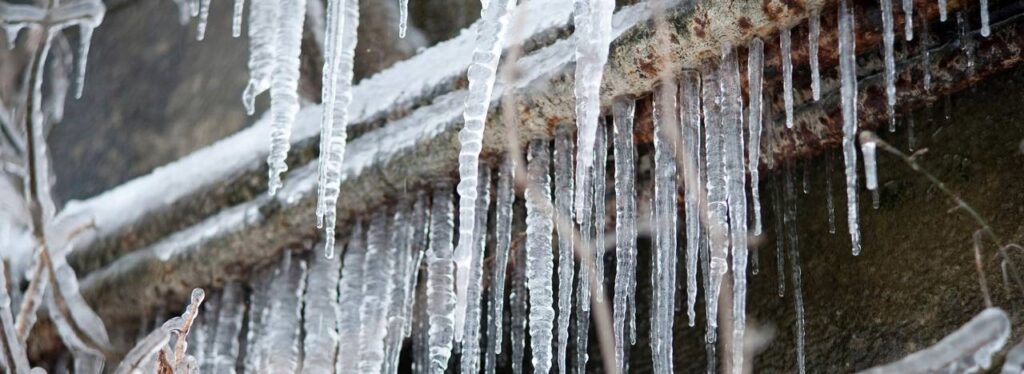Shielding Pipes from Freezing Issues: Critical Strategies
Shielding Pipes from Freezing Issues: Critical Strategies
Blog Article
The content listed below in relation to Helpful Tips to Prevent Frozen Pipes this Winter is incredibly insightful. Read on and make your own results.

Cold weather can ruin your pipes, specifically by freezing pipelines. Right here's how to avoid it from occurring and what to do if it does.
Intro
As temperatures drop, the danger of frozen pipes rises, potentially resulting in expensive repair services and water damages. Recognizing exactly how to stop icy pipelines is vital for home owners in cold climates.
Understanding Icy Pipelines
What triggers pipes to freeze?
Pipelines freeze when exposed to temperature levels below 32 ° F (0 ° C) for extended durations. As water inside the pipes ices up, it increases, putting pressure on the pipeline wall surfaces and potentially creating them to rupture.
Risks and problems
Frozen pipelines can cause supply of water disturbances, building damage, and pricey repair work. Ruptured pipelines can flood homes and cause comprehensive structural damages.
Indications of Frozen Water Lines
Determining icy pipelines early can avoid them from rupturing.
Just how to identify icy pipelines
Look for lowered water flow from taps, unusual odors or noises from pipes, and noticeable frost on exposed pipes.
Avoidance Tips
Shielding at risk pipelines
Cover pipelines in insulation sleeves or utilize warm tape to safeguard them from freezing temperatures. Focus on pipelines in unheated or external locations of the home.
Home heating methods
Keep interior areas adequately heated, specifically areas with pipes. Open up cupboard doors to enable warm air to circulate around pipelines under sinks.
Safeguarding Outdoor Pipes
Garden hoses and exterior taps
Detach and drain yard pipes before winter months. Set up frost-proof spigots or cover outside faucets with insulated caps.
What to Do If Your Pipelines Freeze
Immediate actions to take
If you believe frozen pipelines, maintain faucets available to ease stress as the ice melts. Use a hairdryer or towels soaked in hot water to thaw pipelines gradually.
Long-Term Solutions
Architectural adjustments
Think about rerouting pipelines away from exterior wall surfaces or unheated locations. Include extra insulation to attics, basements, and crawl spaces.
Updating insulation
Buy top quality insulation for pipelines, attic rooms, and wall surfaces. Correct insulation helps maintain consistent temperature levels and reduces the risk of frozen pipelines.
Conclusion
Avoiding icy pipelines needs positive procedures and quick actions. By comprehending the causes, signs, and preventive measures, homeowners can shield their plumbing throughout winter.
5 Ways to Prevent Frozen Pipes
Drain Outdoor Faucets and Disconnect Hoses
First, close the shut-off valve that controls the flow of water in the pipe to your outdoor faucet. Then, head outside to disconnect and drain your hose and open the outdoor faucet to allow the water to completely drain out of the line. Turn off the faucet when done. Finally, head back to the shut-off valve and drain the remaining water inside the pipe into a bucket or container. Additionally, if you have a home irrigation system, you should consider hiring an expert to clear the system of water each year.
Insulate Pipes
One of the best and most cost-effective methods for preventing frozen water pipes is to wrap your pipes with insulation. This is especially important for areas in your home that aren’t exposed to heat, such as an attic. We suggest using foam sleeves, which can typically be found at your local hardware store.
Keep Heat Running at 65
Your pipes are located inside your walls, and the temperature there is much colder than the rest of the house. To prevent your pipes from freezing, The Insurance Information Institute suggests that you keep your home heated to at least 65 degrees, even when traveling. You may want to invest in smart devices that can keep an eye on the temperature in your home while you’re away.
Leave Water Dripping
Moving water — even a small trickle — can prevent ice from forming inside your pipes. When freezing temps are imminent, start a drip of water from all faucets that serve exposed pipes. Leaving a few faucets running will also help relieve pressure inside the pipes and help prevent a rupture if the water inside freezes.
Open Cupboard Doors
Warm your kitchen and bathroom pipes by opening cupboards and vanities. You should also leave your interior doors ajar to help warm air circulate evenly throughout your home.

I was shown that article on Preventing and dealing with frozen pipes from a buddy on our other web address. Feel free to set aside a second to share this post if you enjoyed reading it. We treasure reading our article about Winter Plumbing Precautions: Preventing Frozen Pipes.
Go Deal Report this page